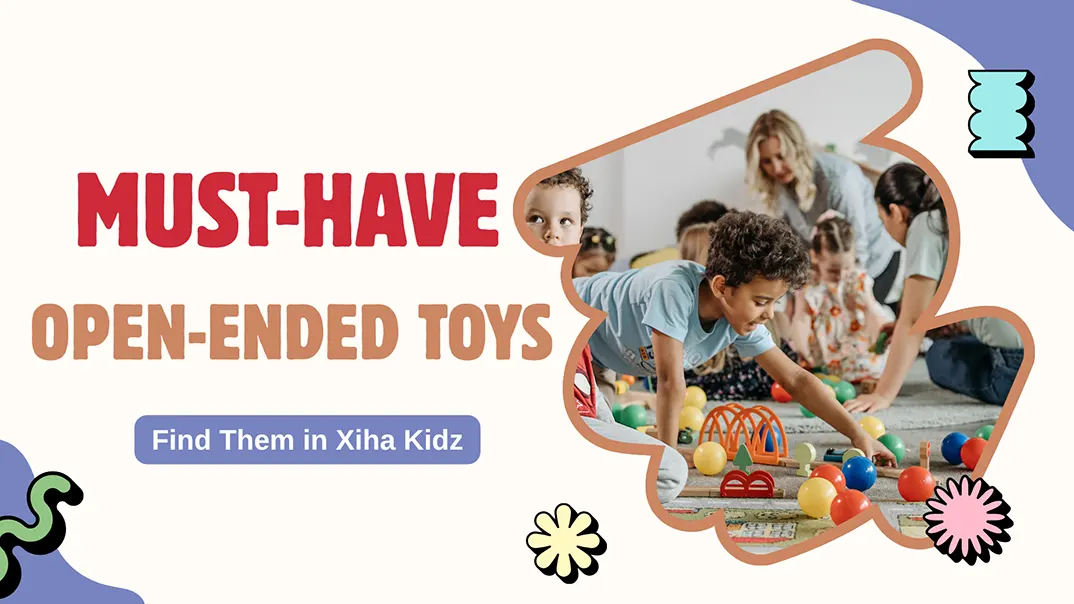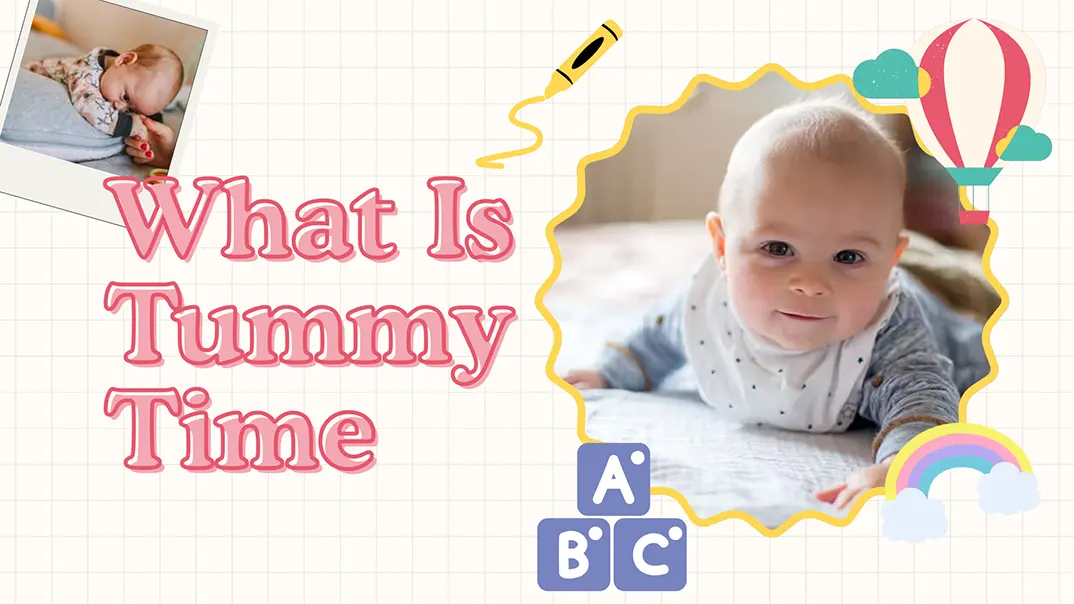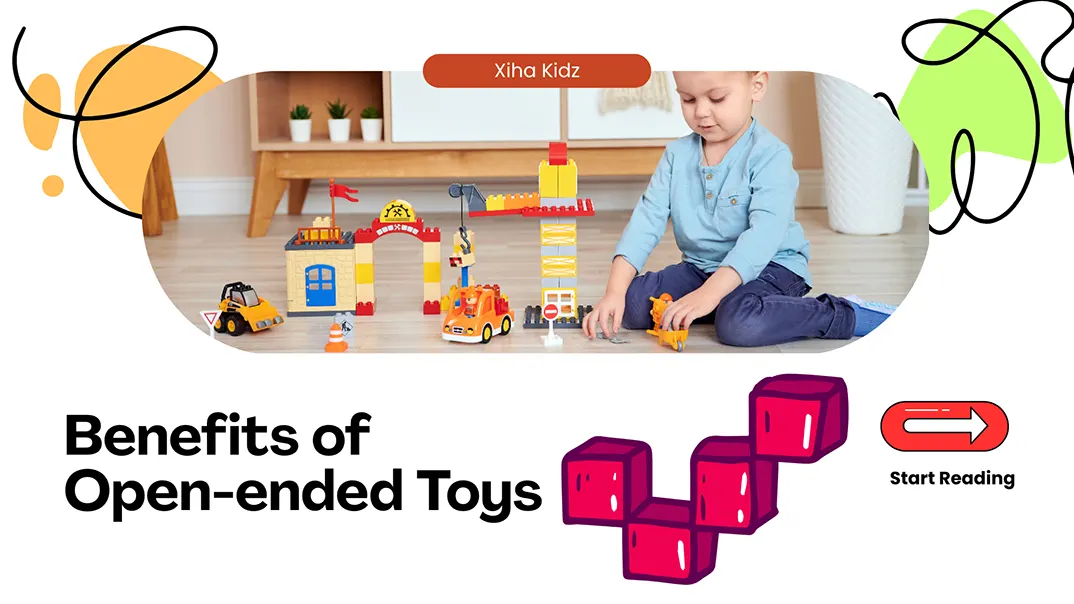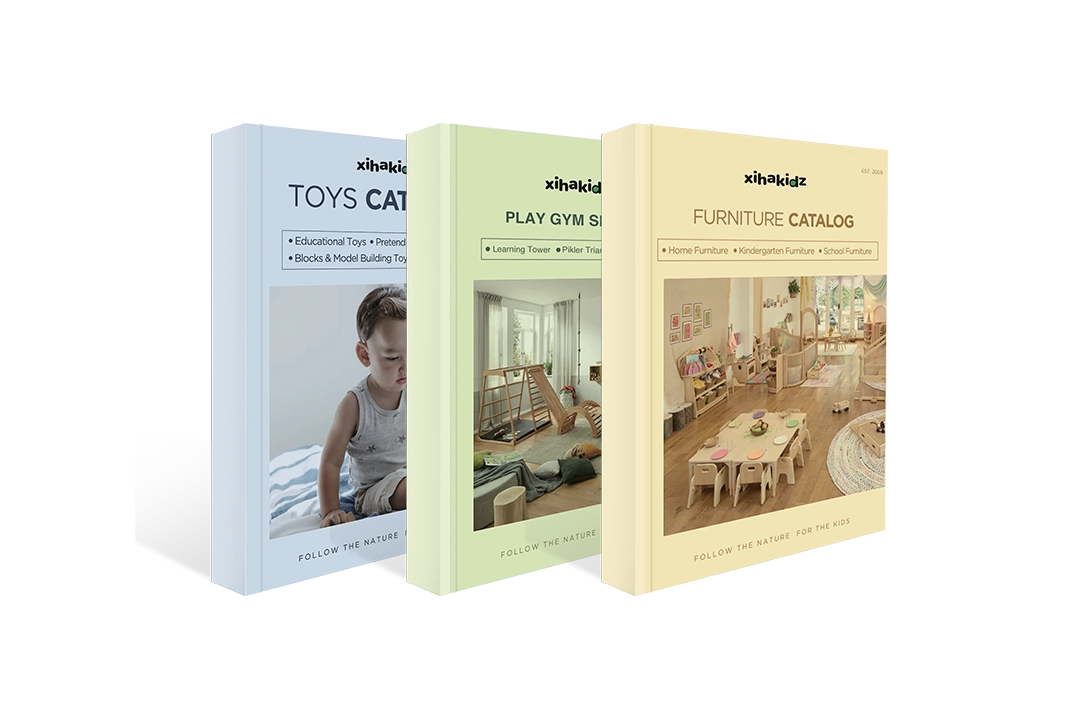Not all toys are created equal. Some are forgotten after a week, while others become the centerpiece of a child’s imagination for years. What makes the difference? The answer lies in how open-ended the toy is.
Open-ended toys are designed without fixed outcomes. They give children the freedom to build, create, role-play, and explore on their own terms. This flexibility supports not just fun but also essential developmental milestones like independent thinking and emotional expression.
If you’re curious about how to bring more purpose into your child’s playtime, this guide is for you. We’ll explore the key features of open-ended toys and reveal 10 must-have options that are beloved by educators and families alike.
Benefits of Open-ended Toys
- Encourage Creativity: Children can invent their own games, stories, and worlds.
- Support Cognitive Growth: Promote thinking, planning, and early math concepts.
- Improve Motor Skills: Strengthen coordination and control through hands-on play.
- Develop Language Skills: Inspire storytelling, communication, and expression.
- Foster Social Interaction: Encourage teamwork, sharing, and cooperation.
- Build Confidence: Help children make choices and trust their ideas.
- Grow with the Child: Stay relevant across different ages and stages of learning.
10 Best Open-Ended Toys
Open-ended toys stand out because they grow with the child, offering new possibilities at every stage. They invite creative thinking, independent exploration, and flexible play that never gets old. The following list features 10 must-have open-ended toys that consistently inspire meaningful play and lifelong learning. Each toy is carefully selected for its versatility, developmental value, and ability to engage children in both individual and group settings.
1. Wooden Building Blocks
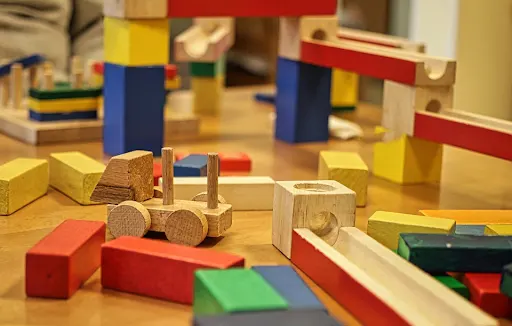
Wooden building blocks are timeless open-ended toys that invite endless creativity. Children can stack, balance, and build structures of any shape they imagine. The natural texture and solid weight engage both the senses and the mind. Ideal for home or classroom use, they inspire cooperative play and problem-solving through hands-on construction.
Key Benefits
- Encourages imagination and creativity through unstructured play.
- Builds fine motor control and spatial awareness.
- Promotes teamwork and communication in group projects.
Idées d'activités
- Build the tallest tower that can stand without falling.
- Sort blocks by color, size, or shape for classification practice.
- Construct a bridge strong enough to hold toy animals.
- Create letters or numbers using different block shapes.
- Build a city together and tell stories about its people.
2. Play Silks
Play silks are lightweight, colorful squares of fabric that spark imagination in countless ways. Children use them as capes, water, sky, skirts, tents, or props for storytelling. Their softness, flow, and vibrant colors make them a favorite open-ended toy for both quiet and active play. Whether in a dress-up corner, a dance activity, or a small-world scene, play silks adapt beautifully to a child’s creativity.
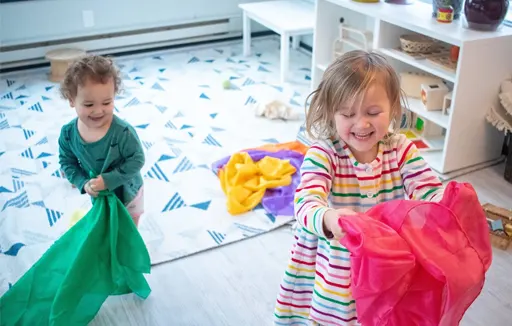
Key Benefits
- Transforms instantly into costumes, landscapes, or props with no limits.
- Soft texture and movement offer calming tactile experiences.
- Inspires storytelling, character role-play, and emotional expression.
- Ideal for waving, dancing, twirling, and full-body movement.
- Safe and engaging for toddlers through early elementary years.
Idées d'activités
- Children use silks as capes, skirts, or hats to become characters. Builds confidence and imaginative expression.
- Move with music while waving or tossing silks. Enhances rhythm, coordination, and emotional release.
- Lay out silks to represent grass, water, or sky for storytelling setups. Encourages visual thinking and creativity.
3. Magnetic Tiles

Magnetic tiles blend engineering, geometry, and art into one playful experience. Their translucent colors catch the light, turning every structure into a glowing masterpiece. Children experiment with balance and symmetry as they snap pieces together. The magnetic force allows easy connection and endless rebuilds, keeping curiosity alive.
Key Benefits
- Encourages STEM learning through exploration of 2D and 3D forms.
- Promotes spatial reasoning, balance, and geometric understanding.
- Safe magnetic design suitable for preschoolers and older children.
- Durable materials ensure long-lasting classroom performance.
Idées d'activités
- Build colorful towers and watch sunlight shine through them.
- Create symmetrical shapes using Montessori mirrors.
- Form letters, animals, or abstract designs.
- Build tunnels and garages for toy cars.
- Collaborate to create a mini magnetic city.
4. Play Dough
Play dough provides a rich sensory and creative outlet for children to shape their ideas. The soft, pliable texture strengthens fine motor skills while inspiring imagination. Whether making animals, letters, or pretend food, each squeeze and roll develops control and coordination. It’s a simple, safe, and endlessly versatile play material.

Key Benefits
- Builds hand strength and dexterity for early writing readiness.
- Supports creative expression and imaginative play.
- Easy to reuse and affordable for repeated classroom use.
Idées d'activités
- Create a bakery of pretend cupcakes and cookies.
- Use leaves or shells to make texture impressions.
- Roll snakes and twist them into letters.
- Mix primary colors to discover new shades.
- Make animal figures and tell stories about them.
Découvrez notre gamme complète de produits
Accédez à notre catalogue complet comprenant des meubles et des équipements de jeu de qualité supérieure pour les jardins d'enfants et les écoles.
5. Animal Figurines
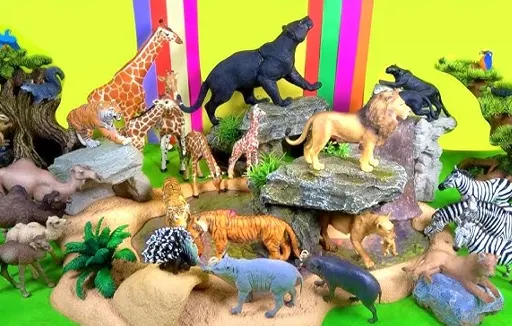
Animal figurines are small, realistic or stylized models of animals that open the door to rich storytelling, pretend play, and nature exploration. Whether representing farm life, jungle creatures, ocean animals, or dinosaurs, these figures help children connect play with the real world. They’re ideal for solo play, social role-play, or as part of sensory bins and small-world setups.
Key Benefits
- Encourages vocabulary growth through naming, describing, and storytelling.
- Inspires children to create scenes, act out animal behavior, or invent adventures.
- Helps children learn about animal types, habitats, life cycles, and ecosystems.
- Children often use animals to explore emotions and social roles.
- Easily combines with blocks, play silks, or loose parts to expand the play world.
Idées d'activités
- Sort animals by habitat, diet, or continent.
- Build miniature environments using natural materials.
- Match animals with their sounds or footprints.
- Create short stories featuring favorite animals.
- Use in water or sand trays for sensory exploration.
6. Loose Parts Tray
Loose parts trays include a variety of small items like wooden rings, pebbles, buttons, glass gems, felt balls, corks, and shells that children can move, sort, stack, arrange, or combine in countless ways. These trays are intentionally unstructured, allowing children to lead their own play and explore patterns, symbolism, and design at their own pace.
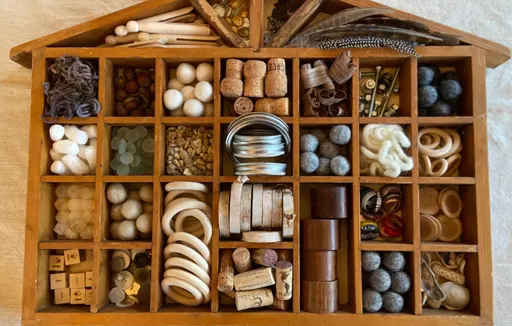
Key Benefits
- Fosters creativity and open thinking through exploration.
- Encourages sorting, sequencing, and problem solving.
- Made from sustainable, eco-friendly materials.
- Suitable for a wide range of ages and settings.
Idées d'activités
- Arrange loose parts in symmetrical mandala patterns.
- Create miniature towns or nature scenes.
- Sort items by color, size, or material.
- Add objects to a sensory tray for texture discovery.
- Make a collage with glue and paper.
7. Pretend Play Kitchen Set

A pretend-play kitchen lets children imitate daily routines while learning important life skills. Through cooking, cleaning, and sharing meals, they develop empathy, communication, and cooperation. These realistic wooden kitchens encourage creative storytelling. They bring home life into the classroom in a playful and meaningful way.
Key Benefits
- Builds social and emotional understanding through role play.
- Expands vocabulary and communication skills.
- Encourages organization, responsibility, and teamwork.
Idées d'activités
- Cook and serve meals for dolls or classmates.
- Sort pretend food by color or food group.
- Follow simple picture recipes together.
- Shop for groceries and organize the kitchen.
- Practice washing dishes as part of clean-up time.
8. Montessori Pink Tower
Le Montessori Pink Tower helps children understand dimension and sequence. It consists of ten solid wooden cubes, each slightly smaller than the last. Children stack, arrange, and compare to develop visual and spatial awareness. The activity encourages focus, control, and logical thinking while offering a calm learning experience.

Key Benefits
- Develops visual discrimination and size recognition.
- Builds concentration, order, and logical sequencing.
- Encourages independent and self-correcting learning.
Idées d'activités
- Stack cubes from largest to smallest.
- Compare cube sizes with objects in the room.
- Line cubes in order to visualize dimension change.
- Trace cube outlines for an art connection.
- Combine with the Brown Stair for advanced practice.
9. Sensory Bin or Discovery Table
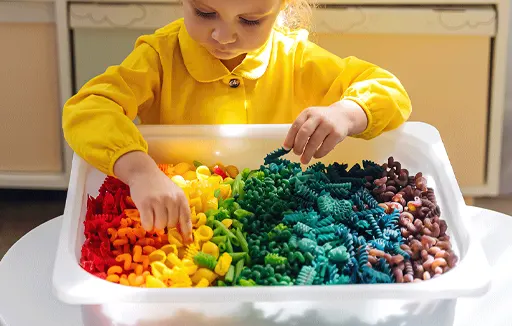
A sensory bin allows children to explore textures, weights, and materials through touch. It may contain rice, sand, or water, encouraging scooping, pouring, and sorting. Sensory play supports attention, calmness, and regulation. This type of activity combines science, creativity, and mindfulness in one simple setup.
Key Benefits
- Develops sensory awareness and focus.
- Encourages experimentation and observation.
- Adaptable for many classroom themes.
Idées d'activités
- Hide small toys and let children find them by touch.
- Measure and pour different materials into containers.
- Sort items by color or texture.
- Explore letters and numbers in hidden form.
- Add natural elements for seasonal learning.
10. Stacking Cups
Stacking cups are simple yet highly versatile open-ended toys that appeal to babies, toddlers, and preschoolers alike. These lightweight, usually colorful cups can be nested, stacked, scooped, or sorted, making them ideal for both solo and guided play. Whether used in water, sand, or on the living room floor, stacking cups offer endless learning through hands-on discovery.
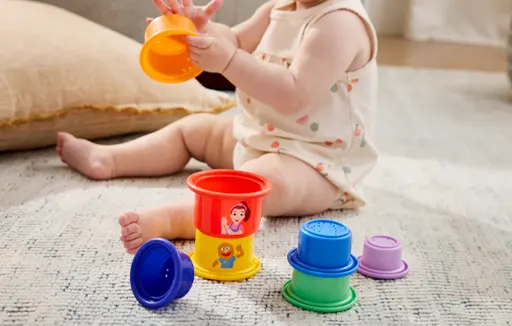
Key Benefits
- Stacking and nesting improve spatial awareness and precision.
- Encourages problem-solving, sequencing, and size comparison.
- Children explore concepts like bigger/smaller, more/less, and ordering.
- Can be used indoors, outdoors, and during bath time for varied play.
Idées d'activités
- Stack as high as possible without tipping for a fun fine motor workout.
- Use cups to scoop, pour, and explore volume during bath time or in a sensory bin.
- Place small objects like buttons or beads inside the cups by color or size.
- Tap cups together or fill with different materials to make music.
- Hide a small object under a cup and guess its location after shuffling.
Découvrez notre gamme complète de produits
Accédez à notre catalogue complet comprenant des meubles et des équipements de jeu de qualité supérieure pour les jardins d'enfants et les écoles.
How to Choose High-Quality Open-ended Toys?
Not all toys labeled as “open-ended” truly deliver the lasting value they promise. While many options may appear creative on the surface, high-quality open-ended toys must meet certain standards to support deep, meaningful play. Knowing what to look for can help parents, caregivers, and especially educators select toys that promote learning, imagination, and long-term use.

Look for Simplicity and Versatility
The best open-ended toys are simple in design but rich in possibility. Avoid toys with fixed functions, electronic features, or overly detailed themes. Instead, choose items that can be used in multiple ways across different settings. A wooden rainbow stacker, for example, can be a bridge, a tunnel, or part of a sculpture—depending entirely on the child’s imagination.
Prioritize Natural and Safe Materials
Toys made from wood, fabric, metal, or other non-toxic, natural materials tend to be more durable and sensory-friendly. These materials offer tactile richness and visual calm, which are especially valuable in classroom environments or homes focused on mindful play. Always check for certifications that indicate safety, such as non-toxic finishes or BPA-free plastics.
Select Toys that Grow with the Child
High-quality open-ended toys should support different types of play over time. A toy that engages a toddler through stacking should later support a preschooler’s storytelling or an older child’s architectural design. This long-term usability ensures better value and reduces the need for constant toy rotation.
Check for Cultural and Gender Neutrality
Avoid toys that limit play based on gender stereotypes or narrow cultural roles. The most effective open-ended toys are inclusive, encouraging all children to imagine freely without being boxed into specific identities or narratives. Dolls with minimal features, blocks without characters, and unbranded objects help children create diverse stories.
Evaluate Durability and Construction
Especially in educational settings, toys must withstand heavy use. Choose products with strong joints, solid craftsmanship, and smooth finishes. Cheap or poorly made toys not only break easily but can also pose safety risks or create frustration for young children.
Consider Storage and Organization
Quality open-ended toys should be easy to store, organize, and rotate. Modular toys, loose parts, and stackable sets are ideal because they adapt to small spaces and changing learning themes. Educators may also appreciate toys that are easy to clean and quick to reset for the next play session.
Trust Reputable Brands and Reviews
Look for toy makers known for open-ended designs and educational value. Reading reviews from other educators and parents can provide insight into how children actually interact with the toy over time. Reliable feedback can reveal whether a toy continues to engage or quickly loses appeal.
How to Introduce Open-ended Toys to Children?
Introducing open-ended toys to children is a gentle process that focuses on curiosity rather than instruction. The goal is to create an environment where children feel free to explore, make choices, and express creativity. With a few intentional strategies, you can guide your child toward deeper and more independent exploration.

Start with a Small, Focused Selection
Offering too many toys at once can overwhelm children and lead to scattered attention. Begin with a few open-ended toys placed neatly in a dedicated space. For example, a basket of wooden blocks, a silk scarf, and a set of animal figurines is more inviting than a crowded toy shelf. Rotating materials every few days helps maintain novelty and sustained interest.
Model Curiosity Without Taking Control
Children often learn by observing adults. You do not need to give them instructions. Instead, demonstrate curiosity by saying things like, “What do you think we can build with these pieces?” or “This scarf reminds me of a river. What does it look like to you?” These gentle prompts inspire imagination without limiting possibilities.
Avoid Over-Explaining or Defining Purpose
Let children lead the play. Refrain from comments such as, “Let’s build a house like this” or “Use the toy this way.” Instead, encourage their decision-making with questions like, “What are you thinking of making today?” or “What happens next in your story?” This fosters a sense of ownership and creative freedom.
Create a Calm and Inspiring Play Environment
The environment plays a big role in how children engage with open-ended toys. Choose a quiet, uncluttered space with natural light and a few well-chosen materials. Using baskets, trays, or low shelves helps children access and organize their toys independently. A thoughtfully prepared space supports longer periods of focused play.
Protect Uninterrupted Play Time
Open-ended play unfolds gradually. Children often need time to experiment, settle into a rhythm, and dive deeper into their imaginative worlds. Avoid unnecessary interruptions, and allow them to stay engaged as long as they wish. This uninterrupted time encourages focus, persistence, and problem-solving.
Observe Before Intervening
Watch how your child uses the toys. Are they stacking, sorting, pretending, or creating a story? These observations can help you understand their interests and guide future play options. You might say, “I noticed you used every block to make a road,” which reinforces their effort and sparks reflection.
Encourage Verbal Expression
Ask open-ended questions that prompt storytelling, such as “Can you tell me about this world you created?” or “Who lives in this castle?” Talking through their play deepens the experience and supports vocabulary development and emotional processing.
Be Patient and Trust Their Process
Children may not immediately know how to use open-ended toys, especially if they are used to toys with buttons, instructions, or predefined outcomes. Give them time to adjust. With consistent access, they will begin to create, build, and explore in their own way.
Transformez votre salle de classe avec des solutions de mobilier personnalisées
Conclusion
Open-ended toys are powerful tools that go far beyond simple entertainment. They empower children to think independently, express themselves freely, and engage deeply with the world around them. Through imaginative storytelling, problem-solving, and hands-on exploration, these toys nurture key developmental skills that structured toys often overlook.
For educators, the value of these toys is especially significant. In classroom or childcare settings, open-ended materials offer inclusive, curriculum-supportive experiences that encourage creativity and collaboration without the need for constant adult direction. They help address common challenges such as keeping children engaged, supporting mixed-age groups, and meeting diverse learning styles.
À Xiha Kidz, we understand the unique needs of educators who strive to create meaningful learning environments. Our toys are safe, durable, and aligned with child development best practices. If you are looking for open-ended toys that promote imagination, support emotional growth, and offer real classroom value, Xiha Kidz is here to help.

